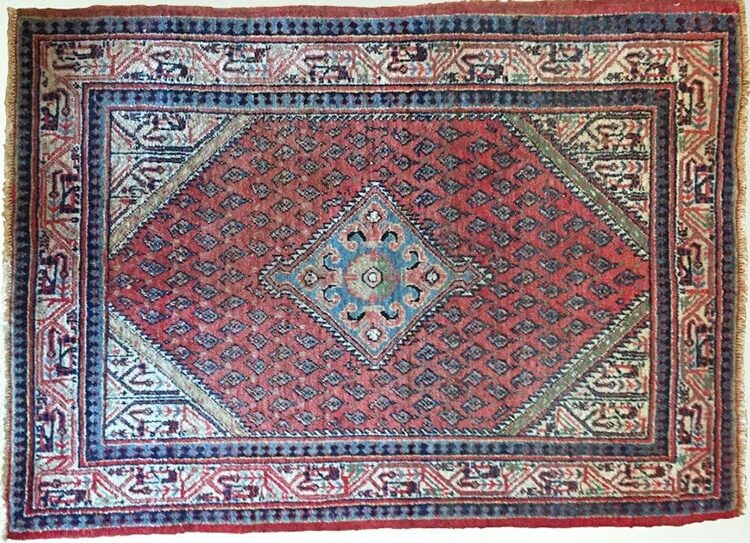You might find many areas named Saraband in the Persian-speaking countries of Iran, Afghanistan, and Tajikistan. The one we are going to talk about is the rural area in Zagros Mountain between Arak and Borujerd. Romanized as Serabend, the name is a term for a type of design with repeated Boteh motifs of this area. Rug experts categorize the Saraband Rug designs as Kurdish styles of neighboring Kermanshah and Kurdistan provinces.
Although Saraband are famous for their coarseness, there is a fine and delicate version of them with similar designs. The locals call them the Mir-Saraband Rug.
Both Arak in Markazi province and Borujerd in Lorestan province are collecting centers for these rugs and carpets.


Technical Aspects and The Structure of The Saraband Rug
Saraband Rug pattern usually has woolen piles, double-weft, and woven with symmetrical/Turkish knots on cotton warps and wefts.
The industry labels such rugs with coarse structure Saraband, while the fine-woven ones are Mir-Saraband. The reason is that the rug artisans produce Mir-Saraband Rug with asymmetrical/Persian knots.
One could find almost all regular rug and carpet sizes in Saraband. Mir-Sarabands are even more diverse in size; runners and even mat sizes are included.


Dyeing and Painting of The Saraband Rug
The rug artisans paint the Saraband patterns mostly in a sparring and simple manner. Madder red is the most popular ground shade. Moreover, They use blue and cream for grounds but rarely. Benefitted by the Zagros’ nature, chemical dyes can’t corrupt the palette of the area.
Mir-Saraband Rugs are more colorful than their coarse peers. Madder red, rosy, and dark blue are common for the grounds of these rugs. One could also find rugs with light green and light blue ground amongst Mir-Sarabands.


Designs and Patterns of Saraband Rugs
Saraband and Mir-Saraband designs are famous for exclusively repeats of Boteh. The rug weavers arrange the Botehs in rows with opposite directions of neighboring rows. Some designs are completely all-over, but others have a rather small diamond-shaped medallion in the center.
This area is also famous for its rather rectilinear interpretation of the Boteh pattern. Some have an elongated feature, while others are rather round.
Borders called Shekeri are also a feature of the Saraband and Mir. These are formed with simple stylized lines resembling branches and leaves. In Some rugs, the central medallion and corners are also filled with such patterns.
Some of these rugs enjoy more intricate borders consisting of several narrow frames, which stand in contrast with simple grounds.
If you are thinking of taking your home to the next level by the charm of the magnificent Saraband we have on sale in our rug store in Lexington, KY!

